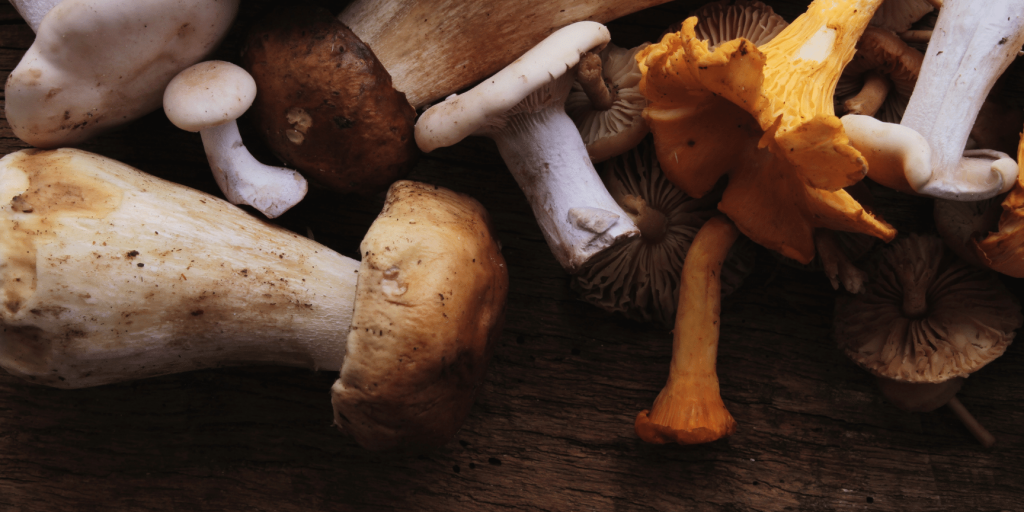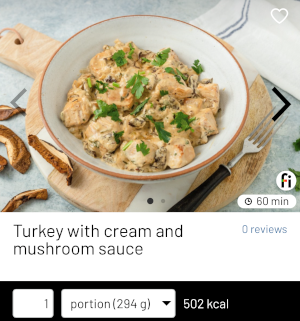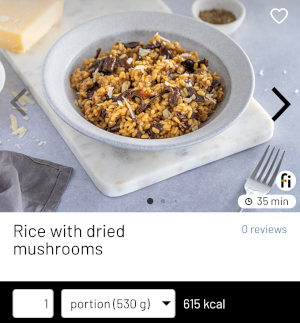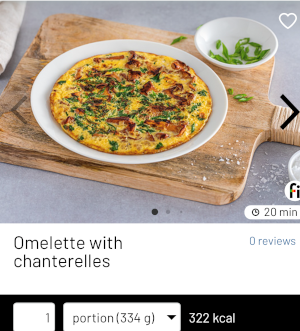Mushrooms on a plate – what’s worth knowing?

Mushrooms, although not very rich in nutrients, are a wonderful addition to autumn cooking. They simply delight with their aroma and are low in calories (40-70 kcal/100 g) due to their high water content. Find out about the most popular forest mushrooms, how to store them, recipes for mushroom dishes, as well as tips to help you pick only edible mushrooms and not be afraid of poisoning yourself.
Autumn is peeking through our windows. Some find it depressing and long for the energy of summer, while others relish the vision of evenings under a blanket with a book in their hands. One thing is for sure – autumn has some indisputable advantages that other seasons cannot boast. These definitely include mushrooms and, consequently, tasty dishes with mushrooms.
What are mushrooms?
Green plants (i.e. trees, shrubs, mosses, ferns, algae, etc.) contain chlorophyll, which enables them to produce organic substances from carbon dioxide and water. This process is called photosynthesis. Fungi do not contain chlorophyll and thus do not have the ability to carry out this process so in order to grow, they have to take ready organic substances from their environment – all dead and decaying plants and even animals.
The most popular edible mushrooms
Because they retain their freshness for a long time, some of the most highly prized mushrooms on the market include the common boletus, the soused boletus, the pine boletus, the brown button mushroom, the edible peppercorn (commonly known as chanterelle mushroom), the mushroom or the common goldeneye. At the same time, they are the most popular and people who do not like mushrooming can easily find them on shop shelves.
Nutritional value
Mushrooms are not rich in nutrients. They provide some amounts of protein, iron, magnesium, phosphorus and B vitamins, but cannot be said to be a rich source of these. Despite their unimpressive nutritional content, they contain biologically active compounds (beta-glucans, chitosans, polyphenols, etc.), which show positive effects on the immune system, glycaemia, and lipid metabolism, as they regulate the concentration of HDL and LDL fraction cholesterol. In addition, these compounds show anticancer, anti-inflammatory and antioxidant effects.
Nutritional value of boletus nobilis:
| Name | Ingredient quantity |
| Energy value | 193kJ/46kcal |
| Fat | 0,4 g |
| of which saturated fatty acids | <0,1 g |
| Carbohydrates | 5,8 g |
| of which sugars | <0,5 g |
| Fibre | 3,8 g |
| Protein | 2,8 g |
| Salt | <0,01 g |
How to process and store mushrooms
Mushrooms collected in the forest are often dirty with forest litter or ‘wormy’. Such mushrooms should be cleaned by lightly scraping with a knife, both the foot and the cap of the mushroom, and cut off any wormy parts (or discarded whole if it is heavily ‘overcrowded’). Specimens that you want to use immediately for mushroom dishes can additionally be rinsed lightly with water. For those destined for drying, freezing or marinating, skip this step.
Dried mushrooms
The mushrooms you want to dry (most often boletes and bay boletes, as they are relatively hard and contain the least amount of water), are cut into fairly thin slices, strung on thread (creating a kind of necklace) and dried, e.g. by hanging them in the kitchen or over the radiator. To speed up the process, you can use the oven. How do you do it? We suggest:
1. preheat the oven to a maximum of 50 degrees C (with the fan function).
2. place cleaned and thinly sliced mushrooms on a baking tray.
3. dry the mushrooms with the oven door ajar for approx. 3 h, “stirring” them every 30 min.
Frozen mushrooms
Some mushrooms, such as butters, are not entirely suitable for drying due to their high water content. The best way to store them is to freeze them. How do you go about this? First, cut them into pieces (preferably of the size you would like to use later for a meal after thawing) and then blanch (cook for about 5 minutes in boiling water). Drain and cool the mushrooms prepared in this way, then pack in bags or boxes and freeze. Remember not to fill the pouches or boxes 100%, as despite blanching, the mushrooms still contain a lot of water and this will increase in volume after freezing and may tear the packaging.
Marinated mushrooms
Mushrooms to be marinated, like frozen mushrooms, should be blanched. Then, according to the recipe chosen, seal them in a jar using the appropriate marinade and spices, boil the jars to pasteurise and set aside for the time specified in the recipe to marinate.
3 ideas for dishes with mushrooms
On the Fitatu app, you will find plenty of ideas for delicious and tried-and-tested dishes with mushrooms, among others:



Fitatu App
Download the application from the Play Store or Apple Store and start counting your macros with us!
Do you prefer the web version? No problem. A basic web version is prepared for our subscribers. And now you can use the MUSHROOMS4 discount code by going to https://www.fitatu.com/app/order-and-payment and get 29% off your monthly Fitatu Premium.
What else can you find in Fitatu Premium?
- over 2000 recipes plus several new ones every month
- additional plans for intermittent fasting
- the ability to create shopping lists
- a choice of six ready-made menus full of meals to choose
- filtering products and recipes
- more synchronization with fit apps
- access to your Meal Plan in the web version
- no ads!
Bibliography:
1. Ewald Gerhard, Guide “Mushrooms”, MULTICO O.W, Warsaw 1997.
2. https://www.gov.pl/web/wsse-poznan/porady-grzybowe-w-wsse-poznan
3. https://www.gov.pl/web/psse-glogow/poznaj-grzyby
4. https://grzybyjadalne.wordpress.com/poznaj-grzyby/najczesciej-mylone-grzyby/
5. https://ncez.pzh.gov.pl/abc-zywienia/grzyby-tylko-smak-czy-zrodlo-witamin/





